category
Touchscreen devices, including mobile phones and tabs, often use Android as their operating system. However, Android has found much broader applicability across devices and use cases in recent times.
Not only does it hold a significant market share, but it is also one of the most widely used OS, specifically in smartphones. Android app developers are increasingly innovating in this field, developing new and varied apps offering different features for the users.
Another OS used primarily for Apple mobile devices is iOS, which is also quite popular. With the market booming with a multitude of Android smartphones and iPhones, users have multiple options to choose from.
The face-off between these two mobile development giants is unending. So let’s look at some of the Android-related developments in 2023. Android has over 2.8 billion active users and a global market share of 75 percent.
Here is a Statista report on mobile operating systems’ market share worldwide from January 2012 to June 2021.
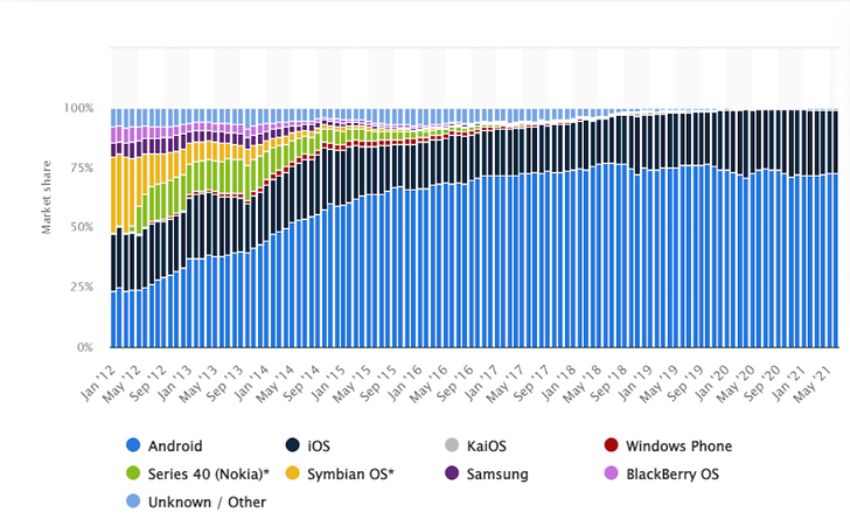
With a rapidly growing user base, Android app developers have been developing many apps to serve users and meet their needs.
As a result, the number of available apps in the Google Play Store was most recently placed at 2.89 million apps, surpassing 1 million apps in July 2013.
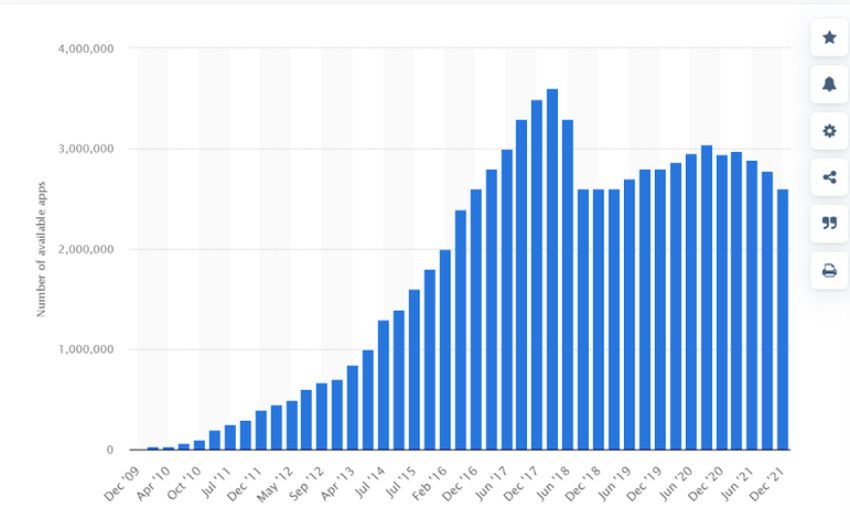
Therefore, App developers must innovate significantly to meet the increasing demands and variety of needs of Android users. Various tools such as Android libraries are available to the developers to continue innovating.
Android libraries are beneficial for Android app developers. Some of the best Android libraries for Android developers are as below.
Table of Contents hide
1 What Are Android Libraries And Why are they Important for developers?
2 What are the Top 20 Android Libraries that every Developer should know?
3 How to Choose The Right Android Library?
What Are Android Libraries And Why are they Important for developers?
A library is identical to an app module. Therefore, you can use anything necessary for creating a software application, such as source code, resource files, or Android manifests. For instance, you can access a library compiled into an AAR file in an Android app module.
StatCounter estimates that in 2021, Android OS holds 71% of the market value. It is compelling and shows Android’s dominance within the mobile gaming industry.
Additionally, new features on new Android phones are being introduced. Users can download new versions of their devices for free without purchasing the latest version of the app.
Android library allows developers to provide automated updates via regular notification at specific intervals. Developers can add new functions in app development, particularly on older versions of devices to stay updated. Updating between Android platforms is difficult. It is also true that these are only updated once per year. Adding Android support libraries is a helpful feature in Android.
What are the Top 20 Android Libraries that every Developer should know?
Picasso
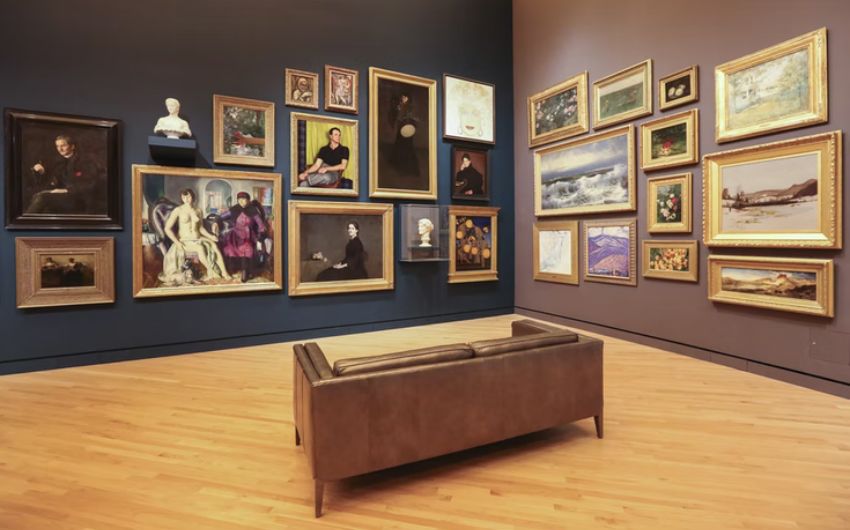
This image library by Square allows image loading and caching. Picasso is an open-source image library that Android developers utilize extensively. In addition, it brings ease into the process of loading images from external URLs.
For any Android developer, getting images from a server needs extensive code. But with Picasso, a few lines of code is sufficient for the task. Further, it can transform images with minimal storage, auto storage, and cache.
Picasso detects reuse automatically. Previously downloaded information and downloads are automatically deleted. As a result, you can quickly convert images in the same format and reduce the size.
Zxing
Zxing uses images to process barcodes for the printing of images. It is written in Java and can use any programming language. Support for 3D products industrial and 2D bar codes is also provided within this.
ZXing also provides the internet with millions of searchable barcodes. Further, an important feature consists of supporting the development of the Android Barcode scanner app that integrates with Google products and book searches.
Android Retrofit

Retrofit is a type-safe HTTP client for Android, Java, and Kotlin that lets you set up REST APIs as interfaces. Developed by Square, Retrofit offers effective interaction and authentication frameworks.
Finding JSON or XML data from a web API is simple with this library. It supports simple XML, Jackson, and other types of data structures. The latest version of the library (Retrofit 2) has added many new features a new internal API.
It is built on top of OkHttp as the networking layer. Several Android developers use Retrofit for its better speed and functionality and more straightforward syntax.
Expansion Panel
Expansion Panel is a Florent Champigny library with many features. It allows developers to implement expansion panels (which include a creation flow and enable light edits). Moreover, it allows more than ten expanded layouts per user. It’s easy to understand, and the project includes a sample program to test.
A further advantage is that you can access the entire code for these Android libraries under the Apache-2.0 license, and you can find code samples on Google Play.
Event Bus
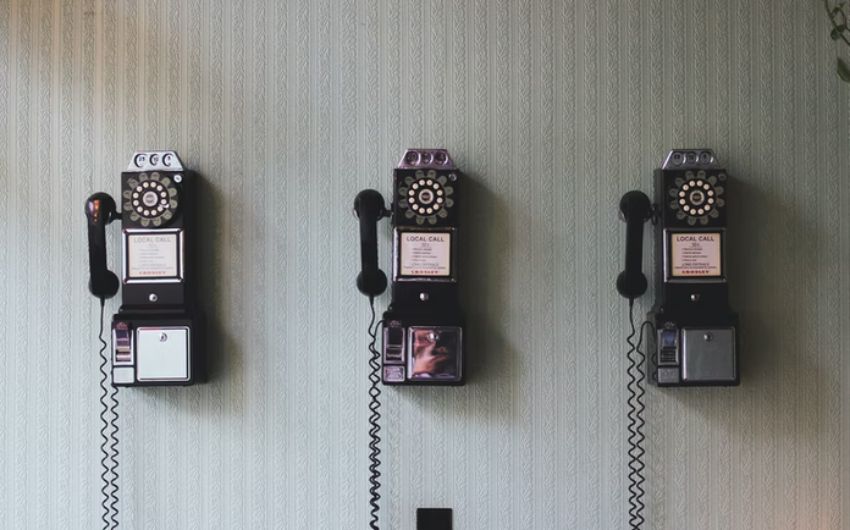
While developing Android apps, when communicating multiple elements in real-time, you might face different issues. EventBus is the best library available for Android.
It was developed primarily by a publisher-subscriber model. This library enables easier communication among components and dissociates events between sender and receiver.
Similarly, it effectively communicates among activities, fragments, and background threads.
Dagger2
There are some good Android apps for Dagger. Dagger stands out among many of the Android libraries requiring dependency injection. A dependency injector library gives smaller parts to a different model and keeps these parts together.
Having large applications will require more complex handling dependent injections. Dagger saves time by creating dependency graphs when compiling using annotation processing.
Glide
Akin to Picasso’s functionality, Glide is an Android library for loading and displaying images. Google backed the development of the Android library by Bumptech, which has been utilized in several open-source projects.
Glide can collect images from several separate sources. It does image manipulations, along with caching and managing low memory impact. In addition, the library allows custom transformation of images and offers fetching, decoding, and displaying video calls.
Lottie
Lottie is a library for Android, and its API parses. Adobe After Effects animation exported as JSON and renders it natively on mobile. This library allows designers to create beautiful animations in a single day.
It also enables engineers and designers to copy and paste animation in one go without recreating the animation manually. In addition, this tool supports solid shapes, masks, Alpha matte trim paths, and dashes.
In addition, the library lets Android developers move forward-backward, and most importantly, it also allows programming animations to respond to all interactions with users.
[Also read: A beginner’s guide to marketing with the Adobe Experience Platform]
Easy Permissions
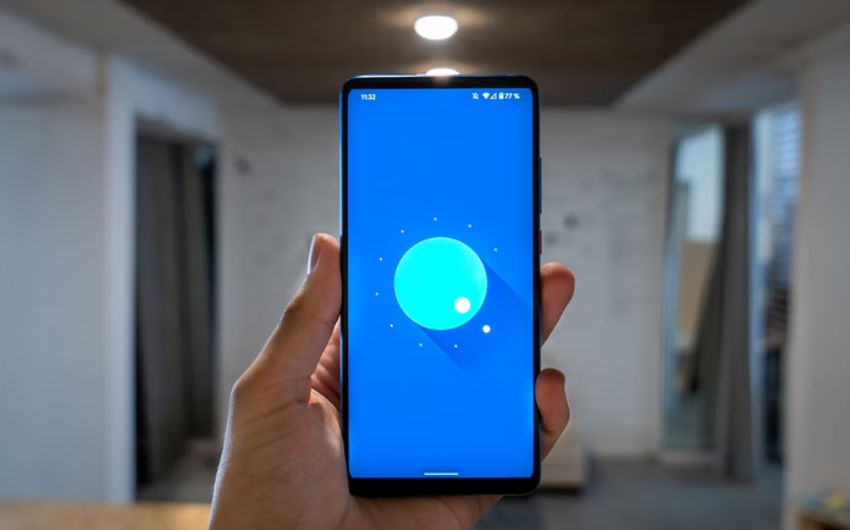
To build an Android application, there are situations where, in order to function, it needs the permission of particular features in a system. When installing an app in an Android system, always do so with a unique user ID.
As a result, the features are visible to that app only and not any other app on the device. Permissions of system apps are therefore required from the user for this purpose.
EasyPermissions is a wrapper library that allows for simplified user login for Android M or above. In addition, EasyPermissions lets the user see which apps already have the permissions to operate.
This method asks for system permission and displays the rationale string supplied if required. The requested code must be unique.
My Little Canvas
My Little Canvas is among the most highly regarded Android libraries. The library will allow working with Canvas for Android, and within it, instead of methods, you can use objects.
This Android-supported library intends to display text underlines as an underlining feature in Text View. A further advantage of the toolkit is that it enables the creation in Canvas of reshapable shapes, round-rect shapes, text shape lines, and curved lines.
CAM View
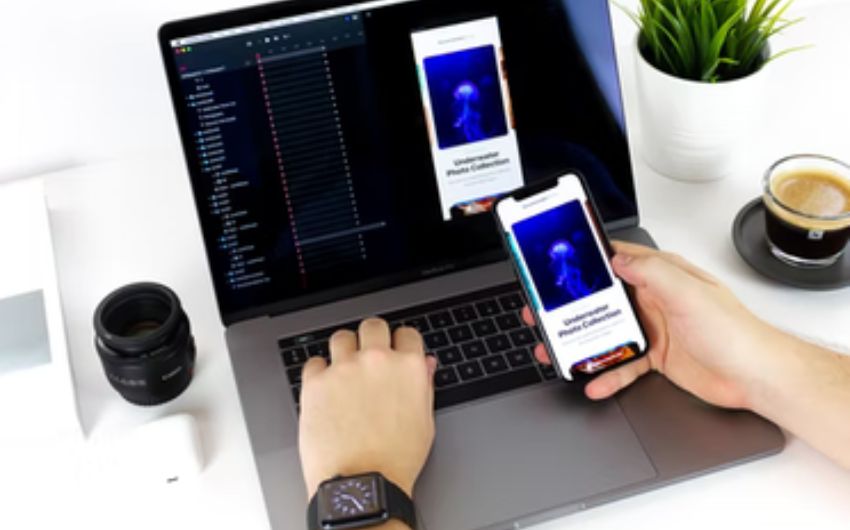
CAMView is an Android camera access library with an integrated QR scanner. Apps use it to access a device’s camera. Moreover, it provides developers with options for components in layout files.
With this library, developers have immediate access to the following features:
- Barcode scanning with ZXing
- Immediate Video stream preview display using the device camera
- Managing live data processing library
- Real-time data processing with camera
CAMView can handle issues such as streaming, compatibility of camera with a device, initializing the camera, orientation changes, etc. The app only needs to hit the layout with the view component.
Butter Knife

ButterKnife uses an annotation-based library for creating boilerplate code for Android. This highly scalable mobile app library developed by Jake Wharton is much more accessible.
Creating view binding Android libraries can be great for developers. ButterKnife helps developers create bindable and drawable-based strings to their views and other data sources. It is beneficial to use in any application.
Due to this Android library, onClick and onTouch are not necessary.
Activity Recognition API
The Activity Recognition API lets users identify the activity they observe, such as walking, driving, or sitting down.
Developers using this library may request activity updates via the “Requested Updates” button or remove the update by using the “Remove Update” button.
Stetho
Stetho is an Android library by Facebook. Debugging of apps from Chrome Developer Tools is made possible using this library. With Stetho, developers have the facility of what is known as ‘intuitive’ debugging.’
Further, using Stetho, developers can get access to information on layout hierarchy overview, outbound traffic, database overview, and so on. It can be said that Stetho is a systematic bridge for developers for Android apps.
Room
The Room Android library allows for developing offline apps with ORM’s Android library. In addition, you use SQLite to handle your data since its syntax and annotations can easily be used.
Also, it is simpler than some ORMs, which require complex APIs. It also supports Rx, which is very good for Android app developers.
Holo Graph Library
Many Android app development companies are taking to this Android library. It is perfect for adding graphs and charts in Android apps. Some examples include PieGraph view, MultiSeriesDonutGraph View, LineGraph view, etc.
Hyperlog-Android
Hyperlog-Android library is built for debugging over the standard Android Log class.
As a well-known utility logger Android library, it maintains the function of storing logs in a database.
Further, it is also responsible for debugging them at a remote server. Another feature includes allowing developers to obtain logs from the file and maintaining a database of log messages.
Object Box
ObjectBox is an Android library that allows developers to spend time on a particular application without storing or retrieving data. Another advantage of using these Android libraries is the embedded databases that provide objects with SQL. It’s also very clear in the IoT context.
The application also helps minimize repetitive activities and provides a quick and easy way to access your data. The application also has an ObjectBox optimized for performance to prevent apps from working with SQL queries.
Three Ten
The ThreeTen library helps Android with time management. This is a backport of JSR-310, earlier included in Java 8 for use with the “java.time.*” package.
The basic Calendar API in Android is challenging to use, but the ThreeTen library is very useful. Nevertheless, the API has fewer count sizes than that of JodaTime, although the API is more concise than the JodaTime API.
Kotlin-math

Kotlin-math is another fantastic Android library because it provides all Kotlin APIs for easy graphics mathematics development. For easy porting code into shaders, the API largely follows OpenGL (OpenGL shader language) shader language.
These values represent the types offered in the library. The API is accessible as functions on a basic level, but not just as a tool.
How to Choose The Right Android Library?
The most suitable Android library for you depends upon what requirements you are looking to fulfill with its use. Depending on the utility and functionality, there are different Android libraries.
Some of them include dependency injector library, networking library, image loading, drawing libraries, scanning library, view binding, debugging library, reactive programming library, UI components library, and testing library.
Here are the factors to help you choose which library you want to go for.
- Popularity: Do developers have a favorable opinion of the library? Have any severe issues been reported for it? If you get satisfactory answers to these questions, you can go ahead and choose the library.
- Author reliability: Looking into the credibility of the library author is a good way to judge the quality. If the author has a well-established presence on Github and has multiple Android libraries to his credit, it speaks for the quality of the library by that author.
- Quality: An updated README file indicates ease in integrating features into your app. Also, see that it is a well-structured library.
- License: The usage of a library can be limited by the license. It is a good idea to look into the license to follow the terms of the library into the app you want to integrate the features.
- Open source: Lack of transparency can be risky. It is better to assess the quality and performance and debug by accessing the library code.
- Library recommendations: Libraries such as Retrofit, Picasso, ButterKnife, Glide tend to be high quality. They are the de-facto libraries on the platform. It’s usually a safe choice to go with these, but it’s better to verify factors such as limitations, features, and advantages.
- Core Features: Utilizing tried and tested options usually works out for the best. Make sure to have complete control over the code, so that you can use the library’s core features for a wide range of use-cases.
FAQs
What is an Android library?
Android Library is an Android app development platform that allows developers to create different sets and functions. This allows developers to make particular modifications easily.
Which libraries are used in Android?
Some libraries for your Android applications include MyLittleCanvas, Extension Panel, ButterKnife, KotlinMath, EventBus, Lotti, SimplePermissions, ObjectBox.
Is Android development in demand in 2023?
The demand for Android development will likely see a rise in 2023. This is because an increasing number of mobile app developers are finding Android to be an ideal platform.
What is the use of third-party libraries in Android?
Third-party libraries are a great way to cost and time required for the development. The reason is that with the third-party libraries, developers can utilize pre-tested reusable software.Â
What third-party libraries you have used mention any 2 or 3?
Some third-party libraries and SDKs include user-interface libraries, Android-networking libraries, image loading and caching libraries, and database helper libraries.
How To Make The Best Out Of Android Libraries For Great Android Apps?
With so many Android libraries available, Android developers have many tools to innovate and make the best apps available for users. These libraries are equipped with the latest features and are useful for Android app development.Â
Android libraries are relevant and necessary with an increasing number of Android users. There are many more libraries available other than those discussed here. It is important to do your research and choose the best possible library for the app you are developing.Â
- 登录 发表评论